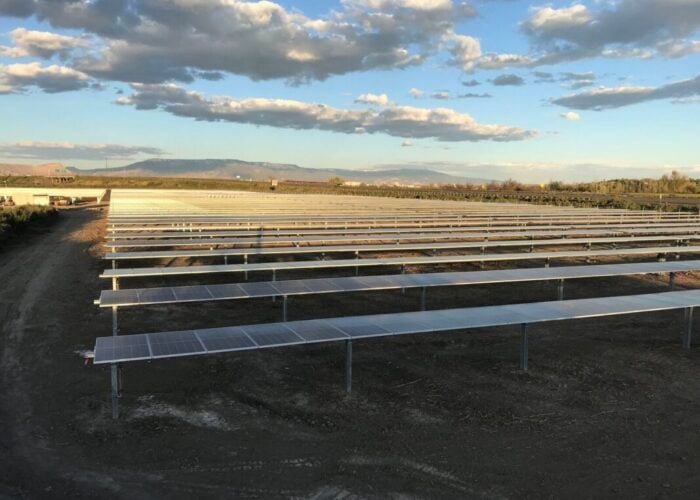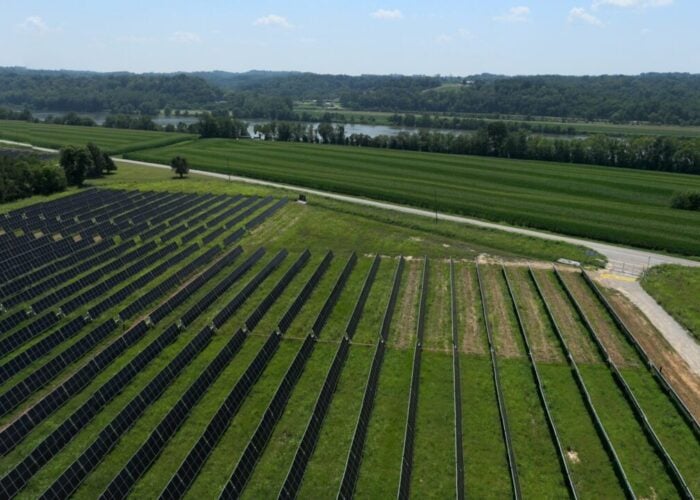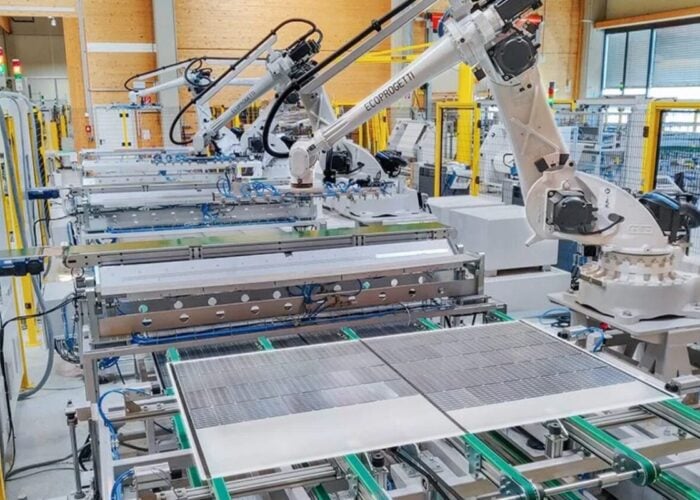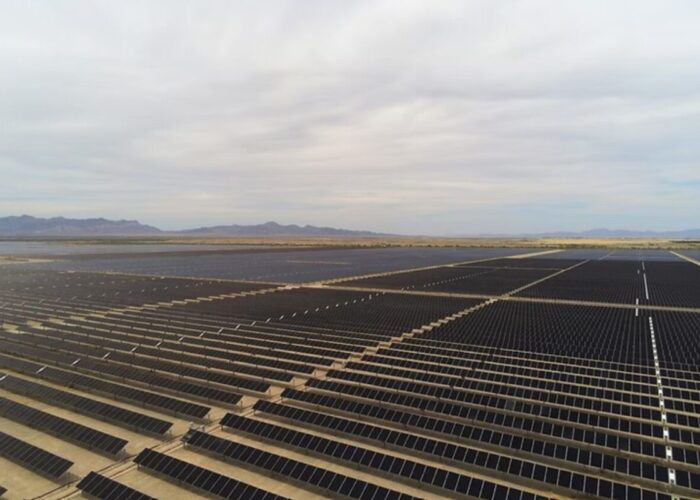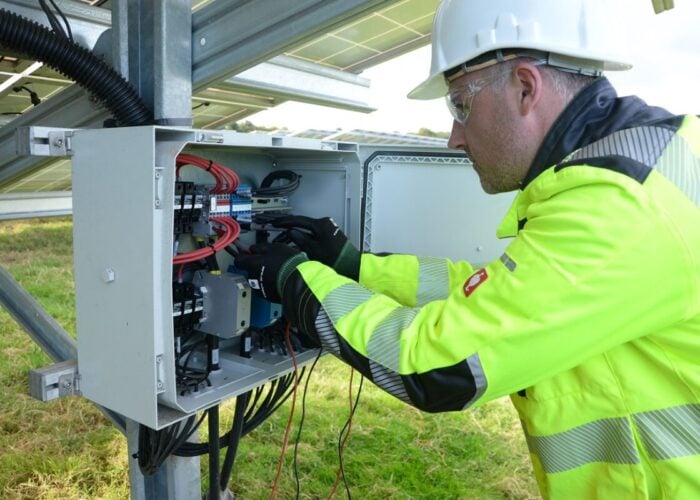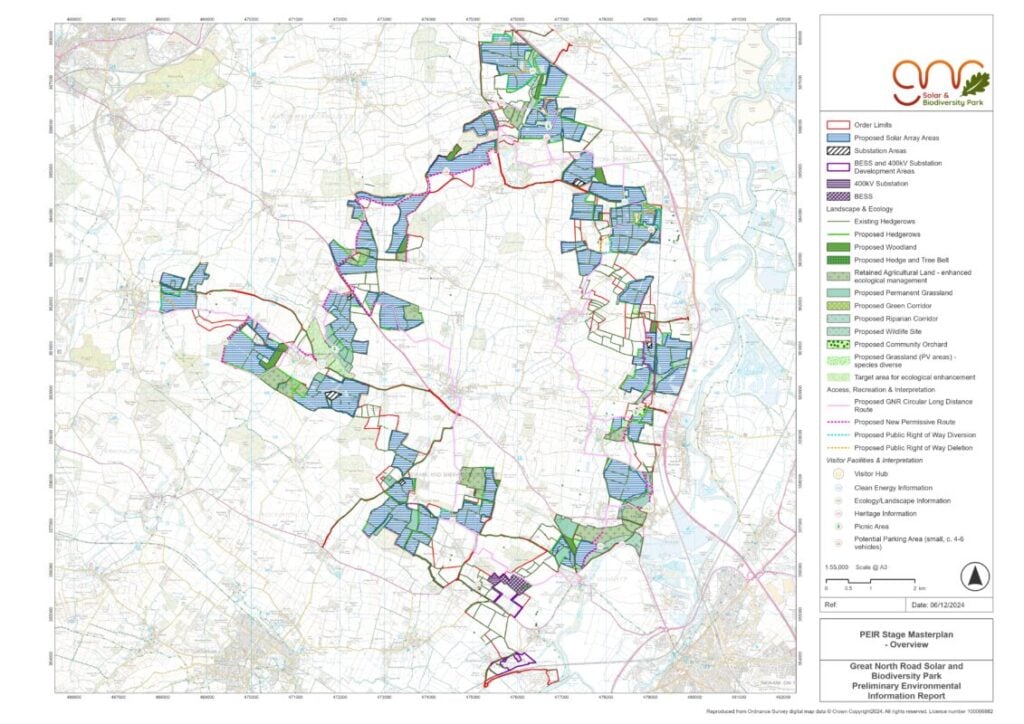
In PV Tech Premium’s fourth story of the week on the topic of community engagement, Molly Green tracks the efforts made by the developer of an 800MW PV power plant in the UK to respond to the concerns of local opponents.
About 50 people gathered in the centre of Lincoln on a Saturday morning in March, calling for “solar on roofs, not farmland” in the East Midlands, an area slated to host hundreds of megawatts of utility-scale solar developments in the coming years.
Try Premium for just $1
- Full premium access for the first month at only $1
- Converts to an annual rate after 30 days unless cancelled
- Cancel anytime during the trial period
Premium Benefits
- Expert industry analysis and interviews
- Digital access to PV Tech Power journal
- Exclusive event discounts
Or get the full Premium subscription right away
Or continue reading this article for free
The National Infrastructure Planning portal lists 29 large solar projects in the East Midlands region that have been approved, are awaiting consent, or are in early development.
The protestors represent but a portion of the vocal groups pushing back against renewable energy developers lodging planning applications for large-scale solar PV plants UK-wide; a petition titled ‘Ban large solar schemes on farmland/open countryside and promote solar on roofs’ received more than 12,000 signatures in just over a month.
Due to their scale, many of these projects are classed as nationally significant infrastructure projects (NSIPs), meaning that the planning process is taken to a governmental level. Developers need a development consent order (DCO) from the UK’s energy secretary.
This means that the decision to approve (or deny) a solar plant is out of the local planning authority’s hands. While this incites a feeling of powerlessness, with the future of a local area not decided by those living in it, developers are at pains to demonstrate the levels to which a solar power station can be tailored to benefit the community hosting it.
London-headquartered renewable energy developer Elements Green has been working on convincing the Newark community of this fact since unveiling early-stage plans for an 800MW ground-mounted solar project in Nottinghamshire, which is set to cover 2,900 hectares to the northwest of Newark. The Great North Road Solar Park will also feature an on-site battery energy storage system (BESS) with an as-yet undisclosed capacity.
A second round of statutory consultation for the project closed in February 2025, concluding a long process undertaken by Elements Green to establish what locals opposed about the project and changes it could feasibly make to the development.
Explaining the developer’s approach, Marke Noone, Elements Green’s project director for GNR Solar, says: “For every topic that people raised, we didn’t think, ‘How do we respond to this’, we thought, ‘How do we do something about that?’”
What’s in a name? Embracing biodiversity
Perhaps most emblematic of the developer’s response to local concerns was renaming the development the Great North Road Solar and Biodiversity Park to reflect an advocacy of ecological principles. Beyond the rebranding, Elements Green forged industry-first partnerships with conservation bodies the RSPB, Sherwood Forest Trust, Nottinghamshire Wildlife Trust and the Trent Rivers Trust to make good on the developer’s environmental commitments.
A total of 850 acres of the site will be dedicated solely to positive ecological management through the planting of native wildflower meadows, grasslands and wetlands, and 50,000 new trees will be planted across the site.
Renaming the development is one way to communicate to the local community that biodiversity will be central to the solar park; in the first round of consultation, the ecological damage caused by such developments was a common criticism of Elements Green’s plans.
This is something that, almost universally, developers come up against. As well as adapting plans to meet this criticism head-on, there is an opportunity to actively counter the commonly held misconception that local ecology suffers when solar arrays are installed. Since February 2024, the UK Environment Act has required that all proposed solar farm projects deliver a biodiversity net gain of at least 10%, a figure that is far exceeded in many cases.
Numerous studies have proven that solar farms deliver significant biodiversity gains under a standardised methodology established by solar trade association Solar Energy UK in collaboration with Lancaster University. Most recently, the RSPB published research showing that, hectare-for-hectare, solar farms hosted three times as many birds as arable farmland.
Land use and farming
A closely linked issue is the impact of solar development on agricultural land. A placard at the anti-solar protest in Lincoln read, “No fields/No farms/No food/No future.”
A National Policy Statement issued last year, making it harder to build on the highest quality land (with a grade of 1 to 3a), ensures solar PV development does not undermine the UK’s food security. Locals who fed back to Elements Green still felt that the use of ‘local farming land’ for the GNR development was “unacceptable.” The developer reiterated that a solar installation is temporary, so the land is not permanently lost.
Further than this, though, Elements Green signed an agreement with two local farmers under which GNR will become the largest UK solar park to embrace grazing. When the development comes online, which Elements Green estimates will be in 2027, a flock of almost 4,000 sheep will graze the solar park’s fields, which could increase up to 9,000 once lambing begins.
Signing this agreement ahead of becoming operational marks a commitment to agrivoltaics that could be more convincing than a statement to that effect. As Noone says, “Rather than just giving sound bites, we actually went out and put teams on each thing and did something about it.”
A research paper published in February 2025 by the University of Sheffield found that agriPV has such high coverage potential in the UK that it alone could help meet UK solar deployment targets, with around 55.5% of British land proving suitable for agriPV.
The rest is politics
In recent years, solar has become something of a political football in the UK. During the race for leadership of the Conservative Party in 2022, when prime ministerial hopefuls Rishi Sunak and Liz Truss used solar as a bargaining tool, Truss suggested the UK’s fields are being filled with “paraphernalia like solar farms” and thus not used for food production.
Since then, despite the best efforts of the industry and a more sympathetic government to dislodge this belief, solar generation—and renewables in general—remains central to political gripes.
Robert Jenrick, the Conservative member of parliament for Newark, where Elements Green hopes to develop GNR solar, addressed the Countryside Alliance in October 2024, stating a “broken market pushes too many farmers to turn good agricultural land over to either ‘rewilding’ or solar farms”. The Countryside Alliance is an organisation that promotes issues relating to the countryside, including field sports like fox hunting as well as farming.
The reality, out of the hands of solar developers, is that it is more profitable for farmers to lease their land to a solar developer than work it, especially land of a grade unsuitable for farming, as per the policy mentioned above.
Indeed, policy accounts for more than just how land is used: the scale of projects like GNR is in line with government targets of installing 45GW-47GW of solar capacity by 2030.
The need for large-scale solar was acknowledged by the previous Conservative government, too, which approved the first UK solar NSIP in 2020.
Part of the reason for this is the rate at which smaller utility-scale projects are turned down at the local planning level. Solar Media Market Research notes that so far in 2025 alone, 500MW of solar PV has been refused planning permission by local authorities.
Achieving the scale needed at the necessary pace, at reasonable cost, leaves few options other than developments of 100MW+ size.
Not enough solar is being installed on the UK’s housing and industrial stock – despite promising a ‘rooftop solar revolution’ in the early days of its premiership, the government has not incentivised or particularly supported domestic property owners to install solar PV.
Roofs, not farms
While fringe political parties such as Reform UK have made being anti-Net Zero a political platform – with the deputy leader of the party, Richard Tice, who has described renewable energy as a “massive con”, in attendance at the Lincoln protest – not all opposition to large-scale solar denies the need for photovoltaic technology.
However, the argument becomes that solar should, at least in the first instance, be placed in already built up areas, on the empty unused rooftops of the UK’s housing stock.
Elements Green has made funding available for nearby homes, businesses and public buildings to install rooftop PV. Energy efficiency upgrades can also be funded in this way, and the developer has been carrying out free energy efficiency surveys for local properties.
In 2024, about 80 of these surveys were completed for locals. The first installations are planned for later this year and the developer has restated that the community benefit fund will continue to expand to cover initiatives such as this.
In developers’ hands: community benefits
The community benefit fund for those living near to the GNR development will see about £1 million available annually for locals. In addition to funding rooftop solar and energy efficiency measures for local homes and businesses, Elements Green has funded several community projects that might otherwise have been overlooked.
Solar developers commonly improve landscaping around a solar PV site to prevent flooding that might result from the build. In the case of GNR, the 50,000 trees that will be planted will improve conditions in the direct area to make flooding less likely. Several villages in the Newark area already suffer from poor infrastructure, which means flooding is a recurring issue.
As Noone explains, the developer is investing resources in “going out there, speaking to local communities and finding out what they want, to set up a trust that’s going to benefit them”.
“It’s a generous scheme, but it’s not just about money,” Noone adds. Just as important as managing the development and making allowances for its impact is the provision of “fringe benefits” that private investment in the area by Elements Green can support. These are small things: a photocopier for one parish, new doors for a village hall, an allotment and an orchard for the community.
“The locality is a host community of a big project that you are bringing along, so you should respect and understand that area, its history, its culture,” Noone says. “I think you can create community buy-in through offerings that are really unrelated to the project.”
Supply chains and local employment
Feedback gathered through community consultation also highlighted public concern around the concentration of the solar PV supply chain in China.
Though in an ideal world, the establishment of solar module manufacturing in the UK could answer this, Noone notes that domestic supply will not be possible before the 2030 clean power deadline.
That does not mean that Elements Green dismissed this feedback, though. The developer responded with a commitment to what it can change, promising electrical cabling and steel mounting frames made in the UK.
Tied up in the same issue is local employment. Rightly or wrongly, there is a perception that solar can negatively affect local tourism, and residents told Elements Green they feared the impact of GNR on local businesses There is also a shortage in the UK of workers with the ‘green’ skills needed to build large-scale solar plants.
As such, Elements Green is launching the EG Academy to provide free educational courses covering all stages of renewable energy projects. The academy offers apprenticeships, PhDs and vocational training.
Elements Green is also partnering with local schools to introduce renewable energy education, including workshops, classroom materials and interactive sessions on sustainability. Once it is operational, students will be able to visit GNR Solar and Biodiversity Park as part of this.
Overall, Noone explains that Elements Green made efforts to act on specific points raised during the consultation but also to go further. He says consultation is “about communication, about being out there and taking opportunities to think how the project can be integrated”.
Between consultation rounds, the developer maintained its community presence. Noone says: “Being there and being present [at times other than just the statutory consultations] tells you what the concerns are, and then when you’re in community consultation a year later, you’ve got answers.
“That was our biggest message: you said, we did.”

